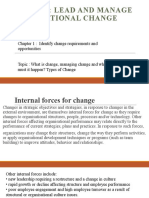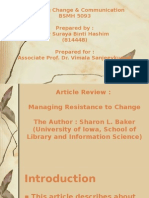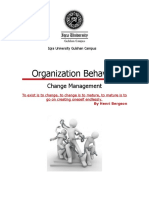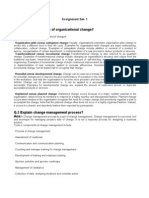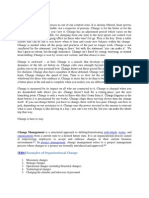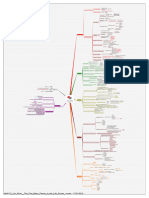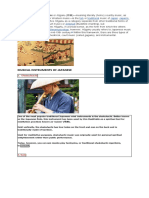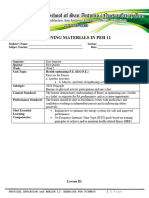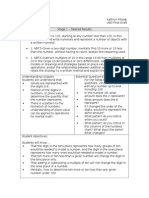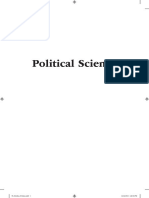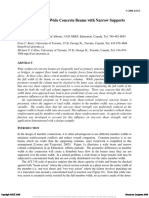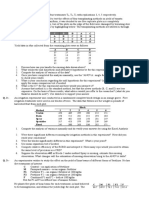0% found this document useful (0 votes)
82 views11 pagesChange Management
This document provides a reflection on chapters 3, 4, 7, 9, and 10 from a change management book.
Chapter 3 discusses the importance of creating change management teams and applying systems of teamwork. Chapter 4 focuses on sources of resistance to change and strategies for overcoming resistance like communication. Chapter 7 examines the causes and impacts of conflict as well as approaches for resolving conflicts. Chapter 9 emphasizes the importance of environmental scanning to identify opportunities and threats. The reflection demonstrates knowledge gained from studying change management and how it can be applied in a management career.
Uploaded by
Sam BrownsCopyright
© © All Rights Reserved
We take content rights seriously. If you suspect this is your content, claim it here.
Available Formats
Download as DOCX, PDF, TXT or read online on Scribd
0% found this document useful (0 votes)
82 views11 pagesChange Management
This document provides a reflection on chapters 3, 4, 7, 9, and 10 from a change management book.
Chapter 3 discusses the importance of creating change management teams and applying systems of teamwork. Chapter 4 focuses on sources of resistance to change and strategies for overcoming resistance like communication. Chapter 7 examines the causes and impacts of conflict as well as approaches for resolving conflicts. Chapter 9 emphasizes the importance of environmental scanning to identify opportunities and threats. The reflection demonstrates knowledge gained from studying change management and how it can be applied in a management career.
Uploaded by
Sam BrownsCopyright
© © All Rights Reserved
We take content rights seriously. If you suspect this is your content, claim it here.
Available Formats
Download as DOCX, PDF, TXT or read online on Scribd
/ 11


















